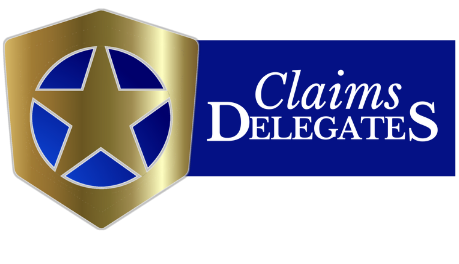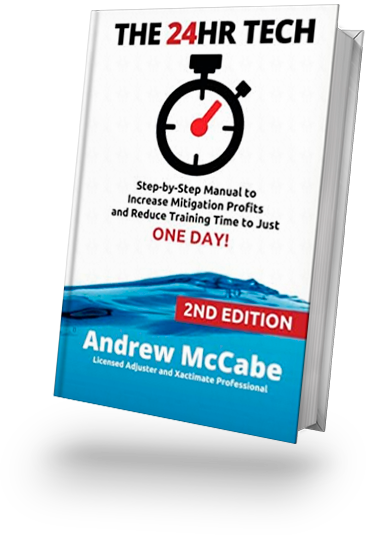The insurance claims world is a dangerous place for amateurs.
“Beginning in the 1990s…insurance companies reconsidered [their] understanding of the claims process. The insight was simple. An insurance company’s greatest expense is what it pays out in claims. If it pays out less in claims, it keeps more in profits. Therefore, the claims department became a profit center rather than the place that kept the company’s promise(s).” – Jay Feinman
Delay Deny Defend 2010I read this book about four years ago, when I was first thinking I could take the insurance industry and flip it on it’s head. Ah, the arrogance of ignorance. A few years on, and I’m a little closer to making a dent in the claims universe. No revolution has happend yet, mind you, but I can see some changes coming.
I picked up a journal from 2013 tonight. I like to re-read my thoughts from time to time, to help keep perspective. I saw some notes I made in February regarding
this book and thought it was time to put together a post for them. What follows is my top eight takeaways from reading Jay Feinman’s wonderful book on insurance claims.
I’ll elaborate on each after I list them.
1) Evaluate your relationship with your carrier.
2) Pick a good company.
3) Buy the right policy.
4) Understand your coverage.
5) Understand the Claims Process.
6) Fully Document your claim.
7) Meet your adjuster.
8) Decide on your need for professional guidance.
-
Evaluate your relationship with your carrier.
We’ve all been taught that we were in “good hands” or that our insurance company was like a “good neighbor”. The commercials and jingles are burned into our heads with millions of dollars of advertising. The reality is that our insurance companies are not our friends or neighbors.
Jay calls the situation a “special kind of business relationship.” Insurance companies should not be viewed as friends. Nor should they be viewed as enemies. You’ve entered into a contract with a large corporation. The takeaway advice is to look out for yourself first, while being cooperative. No need to be abrasive or combative.
Afterall, you want this large corportation to write you some potentially large checks, right?
-
Pick a Good Company.
I’m not going to share my opinion here regarding the good, bad & uglies out there. You don’t have to wander around the Claims Delegates blog for long to get my thoughts on who the bad actors are. There are a couple web sites that will help you figure things out though:
” Consumers spend hundreds of billions of dollars a year on car, home, and life insurance products whose complexity and individual pricing permit insurer inefficiency and abuse. A large majority of the state insurance departments that regulate these insurers have neither the resources nor the will to do so adequately.”
I think they might have seen folks get taken advantage of once or twice, no? I read in my notes that I found a quote saying, “avoid Allstate at all costs.” I wasn’t able to locate that specific quote just now, but I did find quite a scathing report from ’07. I don’t think things have gotten better over at Allstate over the last nine years.
I’ll just leave this link here.
Of course you can use the Google as well as I can, but here’s another
“Hall of Shame” list I found.
What you should do is find a good, independent agent who has access to more than one carrier. They have the best opportunity to shop your premium and get the best coverage. Which leads us to…
-
Buy The Right Policy.
The most important thing to consider when buying ANY insurance is coverage. And when you’re talking about what IS covered in your policy, you also want to check out what things ARE NOT covered in your policy: the EXCLUSIONS. I’ve seen policies which weren’t worth the paper they were written on because of the exclusions which were hidden inside. I spoke with a client last week with a Builder’s Risk policy that excluded damage by fire if the fire was caused by “combustible materials.” Really. A job site with combustible materials? What are the odds?
They suffered a total structural loss and their claim was denied. Because they didn’t understand their policy. (oh, I’m a little ahead of myself)
-
Understand Your Coverage.
Along with the previous section, I’ll add this advice: READ YOUR POLICY! Just do it. That is all.
-
Understand the Claims Process.
This is where things get tricky. Mr. Feinman said you’re an “amateur in a field of professionals.” Once you have a claim you’ve entered a “system designed to make the company money.” (refer to the paragraph that started this post).
The claims center has become a profit center for insurance carriers. They take in over $1 Trillion in premiums every year, and they want to keep as much of it as possible. They have a lot of paid professionals on their side. You need to have someone on yours.
Choose your champion. Is it your contractor? Fine, as long as they aren’t the contractor your adjuster brought with them. Just tell them that you need their help. And ask questions. Don’t think that you have to come off as an expert. I’ve seen plenty of highly educated doctors and lawyers screw up their own claims because they thought they were the smartest folks in the room. They can afford to pay for arrogance and pride, most of us cannot.
I could right a book on this section, and probably should. Just not right now.
Be polite, be prompt and above all BE PERSISTENT.
-
Fully Document Your Claim
This is another section that could use it’s own book, but let’s get the basics down.
Once you have a loss, you need to get incredibly organized and start keeping EVERYTHING. Pictures are king, and don’t throw away anything. Don’t let your contractor throw anything out either. Keep it until you’ve been paid for it.
Don’t overshare. There is a section in
the book which talks about how too much information can be harmful to your claim outcome. Be polite and answer questions truthfully when asked. Just don’t volunteer your life story.
Your job is to Prove your Loss. The adjuster is not going to give you the benefit of the doubt. It is up to you to prove, within any reasonable means, your loss.
I’m adding to my list of to-dos, a list of all the things you’ll need to include in your own claim file. DO NOT assume that documents, emails or pictures that you send to your adjuster will be available for later viewing. Heck, don’t assume they’ll even exist. One of the oldest tricks I see is the “I’m afraid I don’t see that in your file ma’am” trick. Billions of dollars of premiums yet they still have a basement full of filing cabinets where everything is cataloged. Please.
You’re apt to have to send the same form to different departments multiple times before things are settled out. You may as well keep everything yourself in an organized fashion.
-
Meet your Adjuster
This section is a little vaugue for me right now. It’s been a couple years since I read the book and I’ve since given it to someone. So I’m ad-libbing some here.
If you don’t get a good feeling from your adjuster, make the call right away. Find their manager, and their manager’s manager, and get a new adjuster assigned. You’re going to be dealing with this person for a long time. If you don’t get a good vibe or believe they are going to handle your loss adequately, move on and don’t look back.
These days the person that comes to inspect your loss likely won’t even be a company adjuster. If an IA (independent adjuster) comes to inspect, find out who the Desk adjuster is and open direct dialogue with him/her. The IA is just a contractor to the insurance company who’s job is to write as small of an estimate of damages as possible.
Ask for advance payment. The idea is to get them used to writing checks. It doesn’t have to be a huge settlement check either. Tell the adjuster about the clothing you had to replace or the groceries you had to buy. Get them to write you a $1,500 or $5,000 check right away. You shouldn’t have to come out of pocket for anything claim related.
-
Decide on Your Need for Professional Guidance.
I realize this last one is exactly why you’re reading this blog post right now. You got stuck/confused/frustrated with the progression of your claim and went to the Google for answers. I’m glad you found us, and I hope this is helping.
Professional help is not free. Good help is not cheap. Getting what you pay for certainly applies here.
No, you probably won’t have coverage in your policy to pay an expert to represent you. That’s why a lot of PAs (Public Adjusters) work on a commission or contingency basis. I don’t, but I’m not normal.
If you’re insurance company is being completely unreasonable, it may be time to hire an attorney and let them fight it out. A PA will do the same, except they can only take things so far before having to hire an attorney anyway. The going rate for public adjusting is 15% of the claim settlement.
That just about covers it for now. It looks like I’ve obligated myself to more writing. I’ll get right on it. In the meantime, you can read the rest of the blog here.




